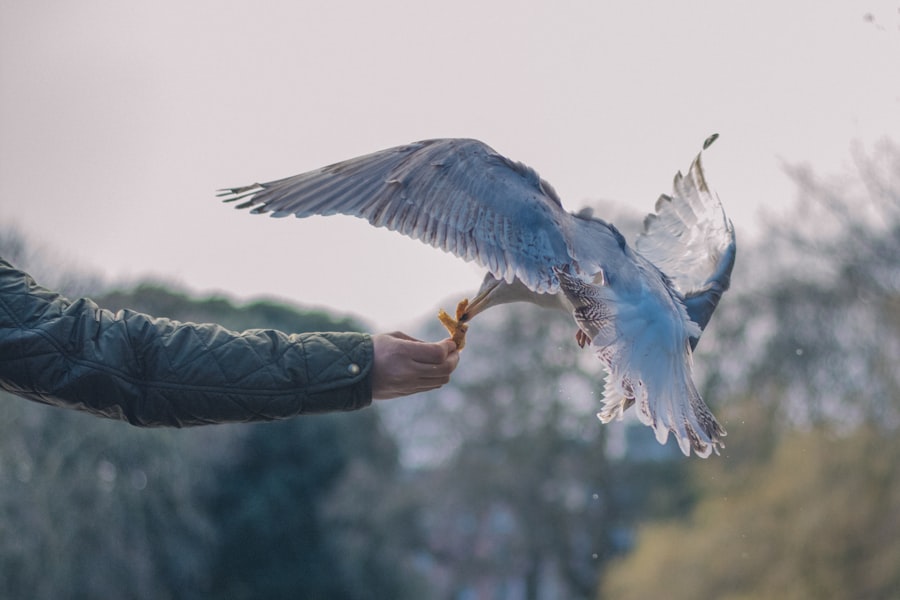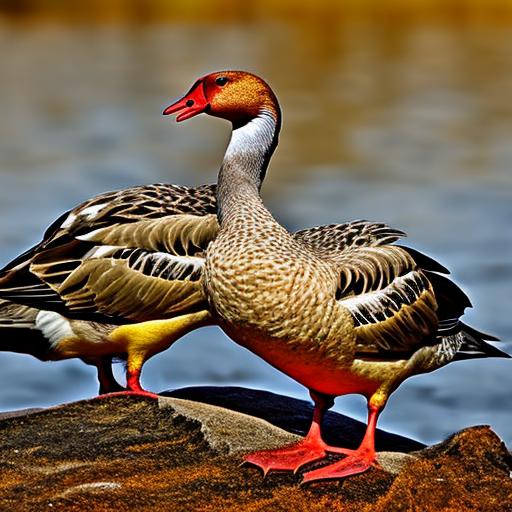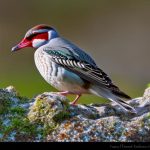Blood flow is a vital aspect of our overall health and well-being. It ensures that oxygen and nutrients are delivered to all parts of our body, while also removing waste products. Poor blood flow can lead to a variety of health issues, including cardiovascular problems, fatigue, and even mental health issues such as anxiety and depression. One way to improve blood flow is by engaging in activities that promote physical activity and relaxation. Feeding geese is one such activity that can have numerous benefits for both physical and mental health.
Feeding geese requires us to be outdoors, which automatically exposes us to fresh air and natural sunlight. This alone has numerous health benefits, including increased vitamin D production, improved mood, and reduced stress levels. Additionally, feeding geese often involves walking or moving around, which helps to increase blood circulation and improve cardiovascular health. The act of feeding the geese can also be a form of gentle exercise, as it requires bending, stretching, and reaching.
Key Takeaways
- Feeding geese is important for blood flow and can have physical and mental health benefits.
- Feeding geese can improve mental well-being and promote social interaction.
- Safe and effective goose feeding requires knowledge of the best foods and dos and don’ts in public spaces.
- Feeding geese can help children learn about nature and responsibility.
- Feeding geese is important for the role they play in ecosystems and for our own joy and fulfillment.
The Benefits of Feeding Geese for Physical Health
Feeding geese can have a positive impact on physical health in several ways. Firstly, it encourages us to spend time outdoors and engage in physical activity. This can help to improve cardiovascular health, strengthen muscles, and increase flexibility. Walking or moving around while feeding geese can also help to burn calories and maintain a healthy weight.
Furthermore, being outdoors in nature has been shown to have numerous health benefits. Studies have found that spending time in nature can reduce blood pressure, lower stress levels, and boost the immune system. It can also improve sleep quality and increase energy levels. By feeding geese in natural environments such as parks or lakesides, we are able to reap these benefits while also enjoying the company of these beautiful creatures.
How Feeding Geese Can Improve Mental Well-being
In addition to the physical benefits, feeding geese can also have a positive impact on mental well-being. Being around animals, especially gentle and peaceful ones like geese, can have a calming effect on our minds. Interacting with animals has been shown to reduce stress, anxiety, and depression. It can also increase feelings of happiness and contentment.
Feeding geese provides an opportunity for mindfulness and being present in the moment. As we focus on the act of feeding and observing the geese, our minds are able to let go of worries and distractions. This can help to reduce racing thoughts and promote a sense of calm and relaxation. The rhythmic movements of feeding the geese can also be meditative, allowing us to enter a state of flow and find peace in the present moment.
The Connection Between Feeding Geese and Social Interaction
Feeding geese can also improve social interaction, which is an important aspect of our overall well-being. When we feed geese in public spaces such as parks or lakesides, we often encounter other people who are doing the same. This provides an opportunity for casual conversations and connections with others who share a common interest.
Feeding geese can also be a great activity for families or groups of friends. It encourages bonding and shared experiences, as well as teaching children about nature and responsibility (which will be discussed in more detail later). By engaging in this activity together, we are able to strengthen our relationships and create lasting memories.
Tips for Safe and Effective Goose Feeding
While feeding geese can be a rewarding experience, it is important to do so safely and responsibly. Here are some tips for safe and effective goose feeding:
1. Choose appropriate foods: Geese have specific dietary needs, so it is important to feed them foods that are safe and healthy for them. Avoid feeding them bread or other processed foods, as these can be harmful to their health. Instead, opt for natural foods such as grains, seeds, and leafy greens.
2. Respect their space: When feeding geese, it is important to respect their natural habitat and personal space. Do not approach them too closely or try to touch them, as this can cause stress and potentially harm them. Instead, maintain a safe distance and observe them from a respectful distance.
3. Feed in moderation: While it can be tempting to feed geese large quantities of food, it is important to do so in moderation. Overfeeding can lead to health issues for the geese and can also disrupt their natural feeding patterns. Offer small amounts of food at a time and observe their behavior to ensure they are eating comfortably.
4. Clean up after yourself: When feeding geese in public spaces, it is important to clean up after yourself. Dispose of any leftover food or packaging properly and leave the area clean and tidy. This helps to maintain the cleanliness of the environment and ensures the well-being of the geese and other wildlife.
The Best Foods to Feed Geese for Optimal Blood Flow

Feeding geese the right foods is essential for their health and well-being, as well as for promoting optimal blood flow. Here are some of the best foods to feed geese:
1. Grains: Geese enjoy a variety of grains, including cracked corn, wheat, barley, and oats. These grains provide essential nutrients and energy for the geese, helping to support their overall health.
2. Seeds: Seeds such as sunflower seeds or birdseed mixtures can be a great addition to a goose’s diet. They are rich in healthy fats and proteins, which are important for maintaining strong muscles and promoting blood flow.
3. Leafy greens: Geese also enjoy leafy greens such as lettuce, spinach, and kale. These greens are packed with vitamins and minerals that support overall health and help to improve blood flow.
4. Water: It is important to provide geese with access to clean, fresh water at all times. Water is essential for hydration and helps to support proper blood circulation.
It is important to note that while feeding geese can be a fun and rewarding activity, it should not replace their natural diet. Feeding them should be seen as a supplement to their natural foraging habits, rather than their sole source of nutrition.
The Dos and Don’ts of Feeding Geese in Public Spaces
When feeding geese in public spaces, it is important to follow certain guidelines and regulations to ensure the safety and well-being of both the geese and other visitors. Here are some dos and don’ts for feeding geese in public spaces:
Dos:
– Do feed geese appropriate foods that are safe and healthy for them.
– Do maintain a safe distance from the geese and observe them from a respectful distance.
– Do clean up after yourself and dispose of any leftover food or packaging properly.
– Do follow any rules or regulations set by the park or public space regarding feeding wildlife.
Don’ts:
– Don’t approach the geese too closely or try to touch them, as this can cause stress and potentially harm them.
– Don’t overfeed the geese, as this can lead to health issues for them and disrupt their natural feeding patterns.
– Don’t feed geese bread or other processed foods, as these can be harmful to their health.
– Don’t disturb other visitors or wildlife while feeding the geese.
By following these guidelines, we can ensure that feeding geese in public spaces remains a safe and enjoyable activity for everyone involved.
How Feeding Geese Can Help Children Learn about Nature and Responsibility
Feeding geese can be a wonderful opportunity for children to learn about nature and responsibility. By engaging in this activity, children can develop a deeper appreciation for the environment and the animals that inhabit it. They can learn about the natural behaviors and needs of geese, as well as the importance of respecting their habitat.
Feeding geese also teaches children about responsibility and caring for others. They learn that by providing food for the geese, they are helping to support their health and well-being. This can instill a sense of empathy and compassion in children, as they witness firsthand the impact their actions can have on other living beings.
Furthermore, feeding geese can spark curiosity and encourage children to ask questions about the natural world. Parents or caregivers can take this opportunity to teach children about different bird species, ecosystems, and the importance of biodiversity. This hands-on learning experience can be both educational and enjoyable for children of all ages.
The Role of Geese in Ecosystems and the Importance of Feeding Them
Geese play an important role in ecosystems and their presence is crucial for maintaining a healthy balance in nature. They are herbivores that feed on grasses, aquatic plants, and grains. By consuming these plants, geese help to control their growth and prevent overgrowth in certain areas. This is particularly important in wetland ecosystems, where excessive plant growth can lead to decreased water quality and habitat degradation.
Geese also contribute to nutrient cycling in ecosystems. Their droppings contain valuable nutrients that enrich the soil and promote plant growth. This helps to create a fertile environment for other organisms, including insects, birds, and small mammals.
By feeding geese, we are helping to support their population and ensure their continued presence in ecosystems. This is important not only for the geese themselves but also for the overall health and functioning of the environment.
The Joy and Fulfillment of Feeding Geese for Better Health
Feeding geese is not only a fun and enjoyable activity but also one that offers numerous benefits for our physical and mental health. By spending time outdoors, engaging in physical activity, and being around animals and nature, we can improve blood flow, reduce stress levels, and increase feelings of happiness and well-being.
Feeding geese also provides an opportunity for social interaction, teaching children about nature and responsibility, and supporting the health of ecosystems. By following guidelines for safe and effective goose feeding, we can ensure that this activity remains a positive experience for both humans and geese.
So why not give it a try? Find a nearby park or lake, grab some appropriate foods, and head out to feed the geese. Experience the joy and fulfillment that comes from connecting with nature and these beautiful creatures. Your body, mind, and soul will thank you.
If you’re interested in keeping chickens and ensuring their well-being during colder months, you might want to check out this informative article on Poultry Wizard. It discusses the importance of providing a heater for your chicken coop to keep the blood flowing and maintain optimal health for your feathered friends. To learn more about this topic, click here: https://poultrywizard.com/keeping-chickens/heater-for-a-chicken-coop/.
Meet Walter, the feathered-friend fanatic of Florida! Nestled in the sunshine state, Walter struts through life with his feathered companions, clucking his way to happiness. With a coop that’s fancier than a five-star hotel, he’s the Don Juan of the chicken world. When he’s not teaching his hens to do the cha-cha, you’ll find him in a heated debate with his prized rooster, Sir Clucks-a-Lot. Walter’s poultry passion is no yolk; he’s the sunny-side-up guy you never knew you needed in your flock of friends!







